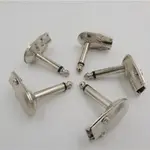sweetbeats
Reel deep thoughts...
It not abnormal to have to re-patch connections for the different recording stages, and that does make it nice the connections are on the control surface.
A mono summing function would be a button that, when pressed, makes the stereo field you hear in the headphones all in the center. This would be handy since you don't have any program groups on the M-08, but rather just the main L-R buss...let's say you have vocal on channel 1 and guitar on channel 2, and you want to record those to tracks 1 & 2 respectively...channel 1 will be panned hard L, and channel 2 will be panned hard R in order to get those sources by themselves on those tracks right? So now what you hear in the cans is your voice all the way to the L and the guitar all the way to the R. A mono function would let you hear those sources in the cans in the center of the field while they are still isolated L and R for your tracks at the main outputs of the M-08. Does that make sense? I know for me it is distracting when I don't have control of the stereo imaging for CUE monitoring. It may not bother you in which case there's no need for a mono function.
A mono summing function would be a button that, when pressed, makes the stereo field you hear in the headphones all in the center. This would be handy since you don't have any program groups on the M-08, but rather just the main L-R buss...let's say you have vocal on channel 1 and guitar on channel 2, and you want to record those to tracks 1 & 2 respectively...channel 1 will be panned hard L, and channel 2 will be panned hard R in order to get those sources by themselves on those tracks right? So now what you hear in the cans is your voice all the way to the L and the guitar all the way to the R. A mono function would let you hear those sources in the cans in the center of the field while they are still isolated L and R for your tracks at the main outputs of the M-08. Does that make sense? I know for me it is distracting when I don't have control of the stereo imaging for CUE monitoring. It may not bother you in which case there's no need for a mono function.




